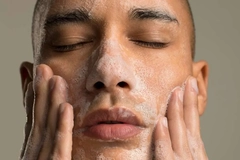Unilever gets SASSY: New marketing strategy “premiumizes” legacy brands
Key takeaways
- Unilever is premiumizing mass-market staples through its SASSY marketing model.
- The company’s “Desire at Scale” campaign focuses on emotional connection to make everyday products feel aspirational.
- The approach is designed to future-proof Unilever’s brands as AI changes how consumers discover and buy products.
Unilever is rolling out its SASSY marketing framework as part of a broader strategy to “premiumize” everyday brands and build what it calls “Desire at Scale.”
The framework stands for Science, Aesthetics, Sensorials, Said by others, and Young-spirited. It will guide the company into turning mass-market staples like Vaseline and Dove into emotionally compelling, aspirational products.
“We’re on a journey to premiumize our brands — luxury brands have long mastered the art of creating that ‘I just have to have it’ feeling, and there’s a lot to learn from how they spark desire,” Esi Eggleston Bracey, chief growth and marketing officer at Unilever, tells Personal Care Insights.
“Our ambition goes beyond luxury. We’re building what we call Desire at Scale — a strategy that makes emotional connection accessible to the many, not just the few. It’s about creating a non-conscious pull, that emotional spark that drives someone to choose a brand not just because it works, but because it feels right.”
Unilever’s SASSY framework is reimagining legacy brands with emotional depth, sensorial richness, and modern appeal while staying grounded in practicality and affordability.
“These aren’t reinventions; they’re evolutions that make the familiar feel fresh,” Bracey says.
Revamping Vaseline
Dove, Vaseline, and Cif are legacy brands. However, making these brands feel premium and desirable to younger, digitally native consumers risks alienating the brands’ traditional base.
The SASSY framework aims to honor what makes its legacy brands iconic. It is framed around “evolving how these brands show up in culture, not just on shelves.”
“Younger audiences expect more than functionality. They want brands that feel personal, shareable, and culturally attuned. That’s why we’re focused on storytelling that builds belonging, not just awareness,” says Bracey.
Unilever launched a social media series called “Vaseline Verified,” in which the company’s scientists test theories and tips circulating online about Vaseline’s efficacy. The scientists verify tricks, such as applying Vaseline to leather goods to refresh their look and feel, or around the hairline when dyeing hair at home to prevent product bleeding.
“The campaign’s sleek visuals and playful tone elevated the brand’s aesthetic appeal, while the tactile, sensory nature of the hacks — from fragrance longevity to makeup removal — tapped into sensorials,” Bracey details.
.webp) Unilever is premiumizing mass-market staples through its SASSY marketing model.“It was a community-led movement, with millions of social interactions and creator content driving the ‘shared by others’ dimension. By showing up in pop culture, beauty, and even food spaces, Vaseline proved it is still young-spirited, culturally relevant, and full of attitude, not age. For me, this brand epitomizes what it means to be SASSY.”
Unilever is premiumizing mass-market staples through its SASSY marketing model.“It was a community-led movement, with millions of social interactions and creator content driving the ‘shared by others’ dimension. By showing up in pop culture, beauty, and even food spaces, Vaseline proved it is still young-spirited, culturally relevant, and full of attitude, not age. For me, this brand epitomizes what it means to be SASSY.”
Bracey says Unilever is appearing in ways that feel relevant and resonant by directly connecting and interacting with consumers about its products.
The Vaseline Verified campaign is touted as compelling proof for the “content-to-creator ecosystem”, as it drove a 45% sales increase for a 155-year-old product.
Deconstructing SASSY
Unilever’s strategy focuses toward Superior Science — the first letter in the SASSY acronym. The concept uses products’ science-backed claims to differentiate them from competitors.
Billion-euro home cleaning brand Cif recently added Infinite Clean to its lineup. The product uses natural probiotics that “keep cleaning for three days” to elevate home care. It addresses the growing demand for non-toxic ingredients and claims to leave a scent reminiscent of a spa.
Aesthetics is the second pillar of the SASSY framework. Unilever says its products must look and feel premium, embodying “beauty in a bottle” with what it calls seductive packaging and captivating design cues.
“[Cif’s] aesthetics are sleek, modern, and distinctive for the category, helping elevate the desirability.”
Sensorials refer to taste, texture, flavor, scent, sound, and rituals. This third pillar is meant to evoke emotional memories to build desire. The brand highlights the creamy texture of Hellman’s mayonnaise, which inspired the creation of the No. 8 Parfum de Mayonnaise scent.
The next S — Shared by others — aims to make marketing communal. Instead of looking at marketing through a “one to many” model, Unilever aims to leverage many people to communicate many messages to other people. The Vaseline Verified campaign ties into this pillar.
.webp) Unilever says Dove and Crumbl’s collaboration was so successful that Walmart featured it in its earnings call.Young-spirited is the final pillar of the SASSY concept, which aims to tap into cultural moments and trends to stay relevant. Unilever applied this pillar to its Dove product line by partnering with the US cookie company Crumbl.
Unilever says Dove and Crumbl’s collaboration was so successful that Walmart featured it in its earnings call.Young-spirited is the final pillar of the SASSY concept, which aims to tap into cultural moments and trends to stay relevant. Unilever applied this pillar to its Dove product line by partnering with the US cookie company Crumbl.
Dove’s collaboration with Crumbl produced a limited-edition body care collection that was launched exclusively at Walmart. For the first time, the brand’s packaging was updated to pink.
Unilever leveraged social media content creators to promote and garner attention for the products. The company said the collaboration was so successful that Walmart featured it in its earnings call.
Looking for luxury
Bracey explains that brand desire is largely driven by digitalization. She says social platforms and mobile connectivity have unlocked new ways to dream, explore, and express identity, making aspiration more shareable and attainable than before.
“This shift has changed how people discover and choose brands. Attention is fragmented, trust is earned differently, and decisions are increasingly shaped by algorithms.”
The rise of AI could also open doors in which everyday purchases are delegated. Bracey imagines a world where consumers set a budget for their groceries and their agents shop for them. The AI tools could buy consumers’ toothpaste, shampoo, or food, all based on their preferences and habits. “Your choices are outsourced,” she says.
“In that world, people won’t think about brands unless those brands truly matter to them.”
This insight sparked Unilever’s shift toward Desire at Scale — a strategy designed to build brands that win emotionally with people and remain relevant in an AI-driven world.
Personal Care Insights has followed how digitalization influences the beauty industry.
.webp) The approach is designed to future-proof Unilever’s brands as AI changes how consumers discover and buy products.Earlier this month, we spoke with Emily Rose Campbell, head of performance at Iced Media, who told us there is an influx of consumers who use generative AI and Large Language Models, such as ChatGPT, for cosmetic product recommendations.
The approach is designed to future-proof Unilever’s brands as AI changes how consumers discover and buy products.Earlier this month, we spoke with Emily Rose Campbell, head of performance at Iced Media, who told us there is an influx of consumers who use generative AI and Large Language Models, such as ChatGPT, for cosmetic product recommendations.
These AI tools are trained on social conversations, especially from platforms like TikTok, making brand visibility in these spaces increasingly essential to avoid becoming “invisible.”
“If marketing today is about capturing hearts and minds, marketing tomorrow is about capturing hearts and machines,” says Bracey.
Despite the digital revolution, she explains that the fundamentals of marketing remain unchanged. Creativity, understanding the target audience, and differentiating from competitors are still relevant concepts.
However, fueling the consumer’s desire now requires emotional resonance, and she says it is ultimately that desire which will “feed the machines.”














